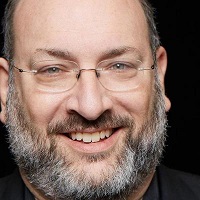 By David Harlow, JD MPH, Principal, The Harlow Group LLC
By David Harlow, JD MPH, Principal, The Harlow Group LLC
Twitter: @healthblawg
Host: Harlow on Healthcare
Hashtag: #HarlowOnHC
I spoke recently with Dr. Rob Lamberts (@doc_rob) about EHRs and direct primary care. I first met Doc Rob through our involvement in the late lamented Grand Rounds (the notable medical blog carnival – you can find some editions here). You should read his blog, Musings of a Distractible Mind, and perhaps you will be able to divine the origins or meaning of his deep interest in llamas.
Rob was an early adopter of electronic health records in his practice, after having been exposed to EHRs during his training. He became the president of the GE Centricity user group, and his group practice won a HIMSS Davies Award for its innovative and effective use of its EHR. He was an avid user and proponent of the EHR, seeing it as a valuable tool for improving the quality of patient care. When implementing the EHR in his practice, he focused on fitting the EHR to his practice, not vice versa. He became disillusioned with the “system” when the HITECH Act mandated meaningful use of certified EHRs and he saw computer-aided efficiencies supplanted by check-the-box operations that made his work less efficient and was unrelated to promoting good clinical care.
Five years ago, Rob left his group practice and founded a direct primary care practice, flipping the traditional practice model from a fee for service model where the practice needs to bring patients into the office in order to generate revenue to the DPC model where it is better for both doctor and patient to manage more care remotely — by phone or text, tuned to the patient’s preferences — and finances are not harmed because patients pay a monthly fee to the practice. In his experience, only about 25% of patients who had office appointments in the final years of his traditional fee for service practice really needed to come into the office; these days he has two to three times as many virtual visits as in-office visits.
The change in practice transformed recordkeeping for Rob’s practice, raising the question: What does a medical record look like if it used not for billing but only for patient care? He started with a homegrown tool but now uses one of the commercial tools available to the DPC community (Elation).
Rob was an early adopter of the DPC model, and in part he credits Dave Chase with motivating him to move his practice in this direction. (Check out the recent Harlow on Healthcare episode with Dave Chase.) Over the past five years, the universe of DPC practices in the US has expanded from under 100 to over 1000.
One drawback to being this far out in front is that Rob, sadly, still has to communicate with specialists via fax … though he says that some specialists will actually use the credentials he provides and log into his system so they can read online his detailed notes regarding the reason for the consult.
Rob believes that eventually artificial intelligence and machine learning will help him in his practice by ensuring the accuracy of patient records, identifying prescription drug interactions and potential side effects, access to longitudinal patient records including prescription medication histories, and eventually by recognizing patterns of how patients are doing before a patient calls so that the practice may be more proactive in managing the health of its patients. He laments the transformation of taking a patient history into filling out an EHR template, and sees AI as a potential tool for returning to taking a narrative history, asking the right questions, making the encounter more human again, and freeing clinicians for most of the time that they currently spend in front of the computer — it’s 50% of their working hours now, and could be brought down to 10%.
Eventually, the computer systems we use should be able to let the clinician know automatically how the patient is doing after the office visit (or virtual visit).
Leveraging the tools we have now, and the tools we should have in the future, will allow us to spend less on care, spend less on medications.
As Rob says, “Most of my patients do not want more care — they understand that and with a little education they can understand that much better.”
This article was originally published on HealthBlawg and is republished here with permission.
